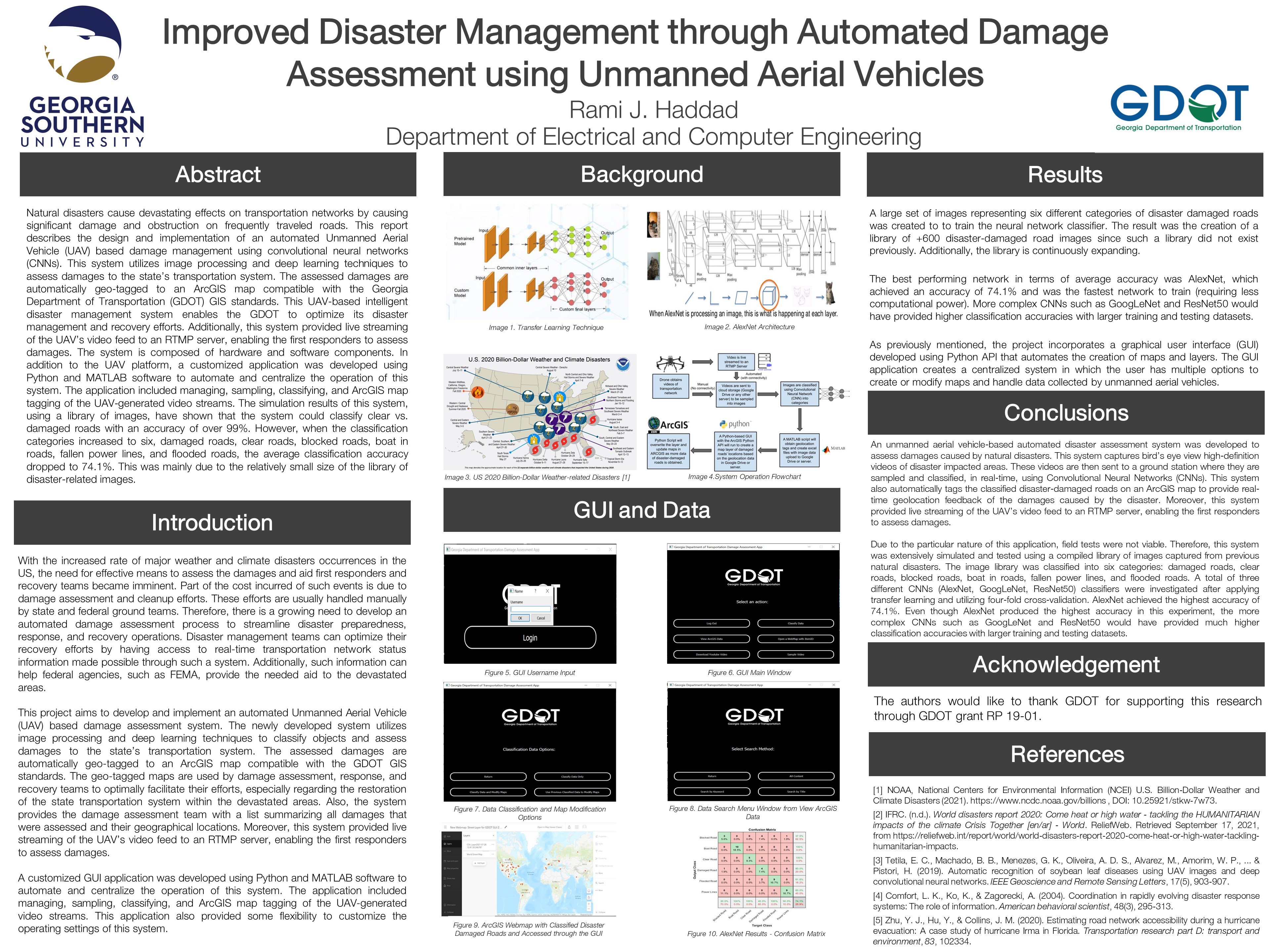University(ies):
Georgia Institute of Technology
Project Description:
In this project, a wireless sensor network will be investigated for installation on a heavy truck to record the dynamic response of the truck as it crosses a bridge mounted with BWIM+NDE devices. The sensors installed in the vehicle include accelerometers to measure vibration and gyroscopes to capture vehicle pitching motion. As the instrumented vehicle approaches the bridge, BWIM+NDE system wirelessly establishes communication with wireless sensors on the vehicle to synchronize time and initiate data collection. As the truck crosses the bridge, the wireless sensors on the truck transmit vibration and pitching data to the wireless BWIM+NDE server for automatic integration with bridge response data. Experimental validation of the proposed wireless system will be performed both in the lab and in the field.
Presentation:
- “Drive-by Bridge Damage Evaluation Using Relative Displacement History“, presented at the 2015 UTC Conference for the Southeastern Region in Birmingham, Alabama, March 26-27, 2015.
- “Field Validation of a Drive-By Bridge Inspection System with Wireless BWIM+NDE Devices”, presented at the 2015 UTC Conference for the Southeastern Region in Birmingham, Alabama, March 26
Posters:
- Field Testing of Martlet Wireless Sensing System on an In-Service Pre-stressed Concrete Highway Bridge (September 2015)
- Field Validation of a Drive-By Bridge Inspection System with Wireless BWIM+NDE Devices (September 2014)
Publications:
- Zhao, Z. and Uddin, N. “Determination of Dynamic Amplification Factors Using Site-Specific B-WIM Data” ASCE Journal of Bridge Engineering, Vol. 19, No. 1, January 1, 2014.
- Zhao, Z. and Uddin, N. “Field Calibrated Simulation Model to Perform Bridge Safety Analyses against Extreme Events’, Journal of Engineering Structures, 56 (2013) 2253–2262.
Web Links:
Project Information Forms:
Zhu, D., Dong, X. and Wang, Y. “Substructure model updating through iterative minimization of modal dynamic residual,” Proceedings of SPIE, Nondestructive Characterization for Composite Materials, Aerospace Engineering, Civil Infrastructure, and Homeland Security, San Diego, California, USA, March 10-13, 2014.
Kane, M., Zhu, D., Hirose, M., Dong, X., Winter, B., Häckell, M., Lynch, J.P., Wang, Y. and Swartz, A. “Development of an extensible dual-core wireless sensing node for cyber-physical systems,” Proceedings of SPIE, Nondestructive Characterization for Composite Materials, Aerospace Engineering, Civil Infrastructure, and Homeland Security , San Diego, California, USA, March 10-13, 2014.
Dong, X., Chen, S., Zhu, D., Kane, M., Wang, Y. and Lynch, J.P. “High-speed heterogeneous data acquisition using Martlet – a next-generation wireless sensing device,” Proceedings of the Sixth World Conference on Structural Control and Monitoring (6WCSCM), Barcelona, Spain, July 15-17, 2014.
Zhu, D., Dong, X. and Wang, Y. “Substructure finite element model updating of a space frame structure by minimization of modal dynamic residual,” Proceedings of the Sixth World Conference on Structural Control and Monitoring (6WCSCM), Barcelona, Spain, July 15-17, 2014.
SEARCH FORM
SearchShowCAPTCHA: no challenge enabled
University(ies):
Georgia Institute of Technology
SEARCH FORM
SearchShowCAPTCHA: no challenge enabled
MAILING LIST
Please complete the form below to join the GTI mailing list.Your Name *Title *Email Address *University AffiliationShowCAPTCHA: challenge “Image” enabled








